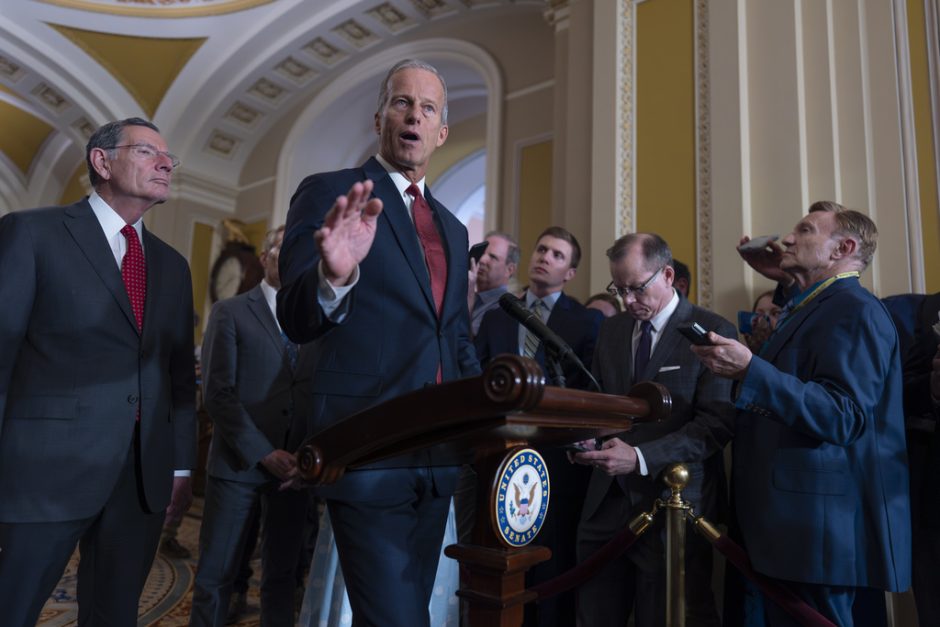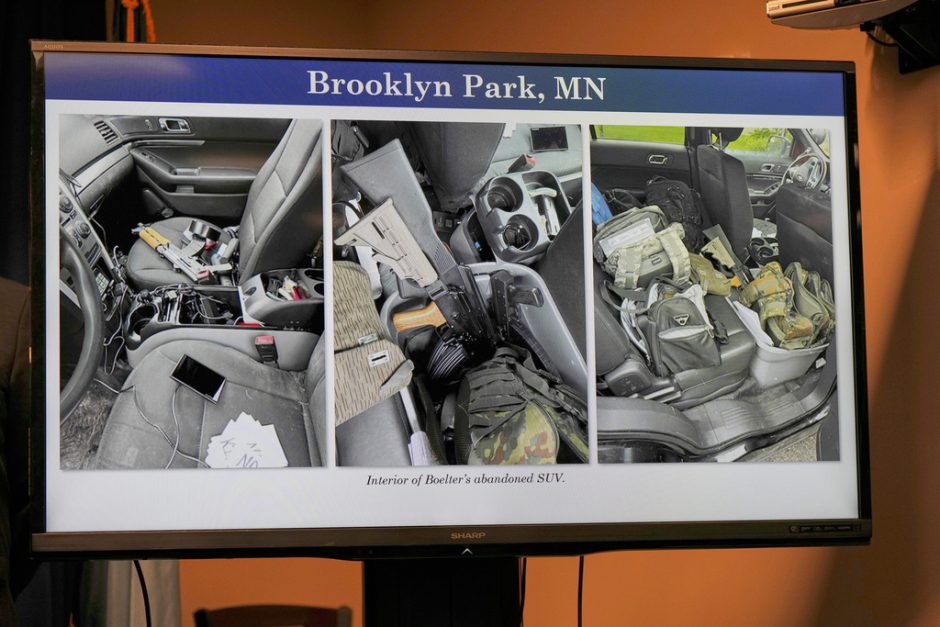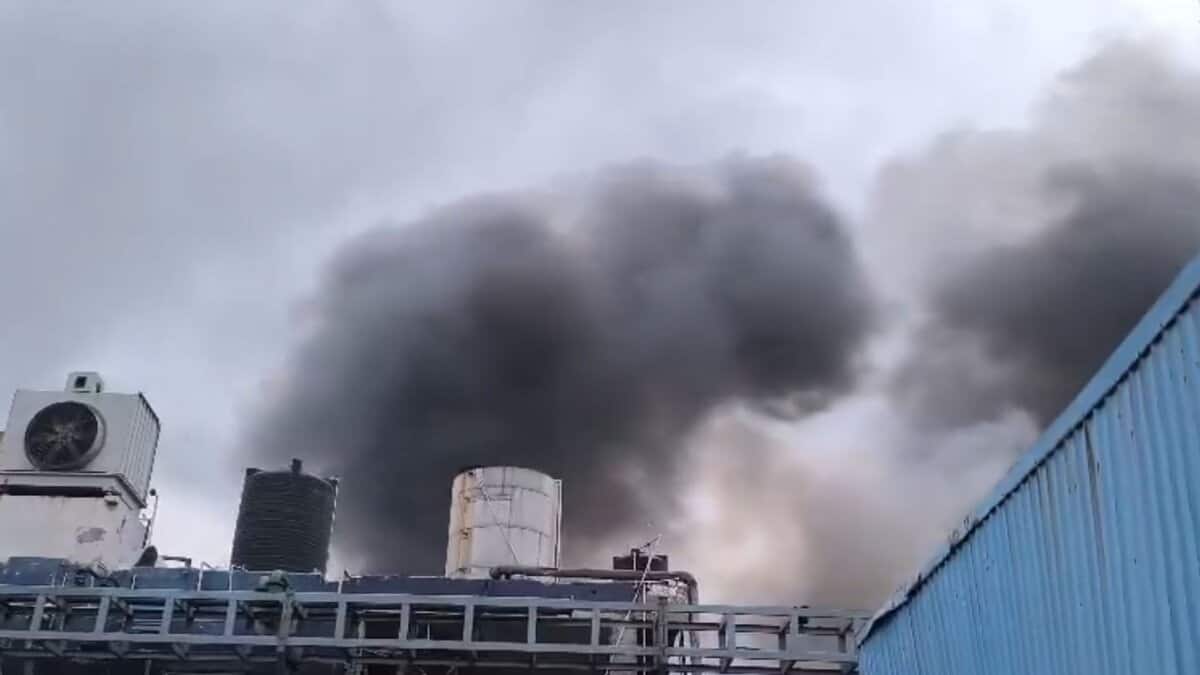WASHINGTON – After suspected shooter Vance Boelter escaped from police following a firefight outside Melissa Hortman’s home, officers found firearms in his SUV and a large quantity of ammunition in loaded magazines.
The criminal complaint against Boelter also said that a dismantled Beretta semiautomatic handgun and several cartridges were found in the area near the murdered lawmaker’s home. Law enforcement also said in the complaint that they found a couple of other handguns in the vehicle Boelter’s wife was driving when she was stopped by authorities after they found her by tracking her cell phone.
Federal prosecutors are now investigating how Boelter came into possession of the guns in his arsenal. But Minnesota law prohibits public disclosures about gun ownership and even state law enforcement doesn’t know how many guns there are in the state and who owns them, so it’s likely authorities in the state were unaware of Boelter’s stockpile.
Those authorities now say they can’t speak about Boelter’s guns because they are part of an open investigation. The Minnesota Bureau of Criminal Apprehension (BCA) maintains a permit tracking system which provides information to law enforcement and prosecutors about people who have been granted or denied a permit to carry a firearm in public. But this information is not made public and does not divulge the identities of those who have received a permit to carry.
According to the Minnesota Department of Public Safety, there were 67,216 applications for permits to carry that were approved in 2024 and 562 that were denied.
Related: Supreme Court won’t revive Minnesota ban on gun carry permits for young adults
The state does not track permits to purchase firearms. Nor does Minnesota law require firearm distributors to maintain a list of sales.
Minnesota does not have a gun registry database, joining a majority of states that lack such records. Only seven states, including Michigan, California and Maryland, have a registry – of handguns or assault-type rifles or both — largely due to National Rifle Association (NRA) opposition. There is no federal gun registry.
So, it’s hard to tell how many firearms there are in Minnesota. The FBI keeps records of how many Minnesotans have had background checks, a requirement for purchasing a gun from a licensed dealer, but this is not an accurate count of firearms that are sold and does not include guns obtained on the black market or through gun shows or, until recently, person-to-person sales.
According to the FBI, there were 370,377 background checks on prospective Minnesotan gun purchasers from January through May of this year. Those background checks increased nearly five-fold since 1999, vastly outpacing the state’s population growth.
Part of the increase can be attributed to a new state gun law passed in 2023. The state Legislature approved – and Gov. Tim Walz signed into law – measures that would subject private transfers of pistols and semiautomatic military-style assault weapons to background checks of prospective purchasers.
No ‘red flag’
The Legislature also approved a “red flag law,” which took effect in January of last year, that allowed family or household members, police or a guardian to petition the court for an “extreme risk protection order” (ERPO) which would prohibit those deemed a danger to themselves or others from possessing firearms for up to one year.
The Minnesota Gun Owner’s Caucus, which opposed the red flag law and said it “would continue to explore court challenges” to the law and “take appropriate legal action if possible” did not respond to several requests for comment.
The gun violence prevention group founded by former Arizona Rep. Gabby Giffords, who was the target of an assassination attempt in 2011, “worked especially closely with then-Speaker Melissa Hortman who was critical to getting gun safety bills that Minnesota passed in 2023,” said GIFFORDS spokeswoman Mary Yatrousis.
Yatrousis said the slain Minnesota lawmaker was instrumental in “moving and growing their support within the Legislature,” for the bills.
Sen. Ron Latz, a member of the DFL and sponsor of the red flag law, said the new law that allowed courts to temporarily disarm someone failed to stop Boelter because “no one knew he had an arsenal.”
“And he had not exhibited any behavior that indicated he was a risk to himself or others,” Latz added.
According to a study about gun violence prepared by the Violence Prevention Center at Hamline University for the state Legislature, 77 ERPO cases were filed in the first eight months after Minnesota’s new gun law took effect.
The study said 90% of the ERPO cases were filed by law enforcement.
The report also said that the Mankato and Rochester Police Departments each filed the most cases, four, and that NO cases were filed in St. Paul or Minneapolis (which make up nearly 15% of the state’s population).
“Out of all cases, three-quarters were approved, 16% were denied, and the remainder were still pending,” the study said.
The report also said that those subjected to a request for a court to approve the removal or their weapons were predominately male, 88%. Most were white (80%), followed by Black (8%) , Asian (3%), and Native American (3%).
The study said 75% of the subjects had a history of mental illness, while 15% had been previously arrested for a violent crime. Fifty-nine percent had more than one gun and one owned 20.The Bureau of Alcohol, Tobacco, Firearms and Explosives (ATF), which joined the massive manhunt for Boelter, also has taken away guns from people involved in crimes. In 2023, the latest year for which the agency has issued a report, 5,206 guns were taken away from Minnesotans. The ATF’s 2025 report on recoveries/removals will likely include the weapons in Boelter’s arsenal.
The post Minnesota likely knew nothing of Boelter’s gun arsenal, and that’s the law appeared first on MinnPost.














































